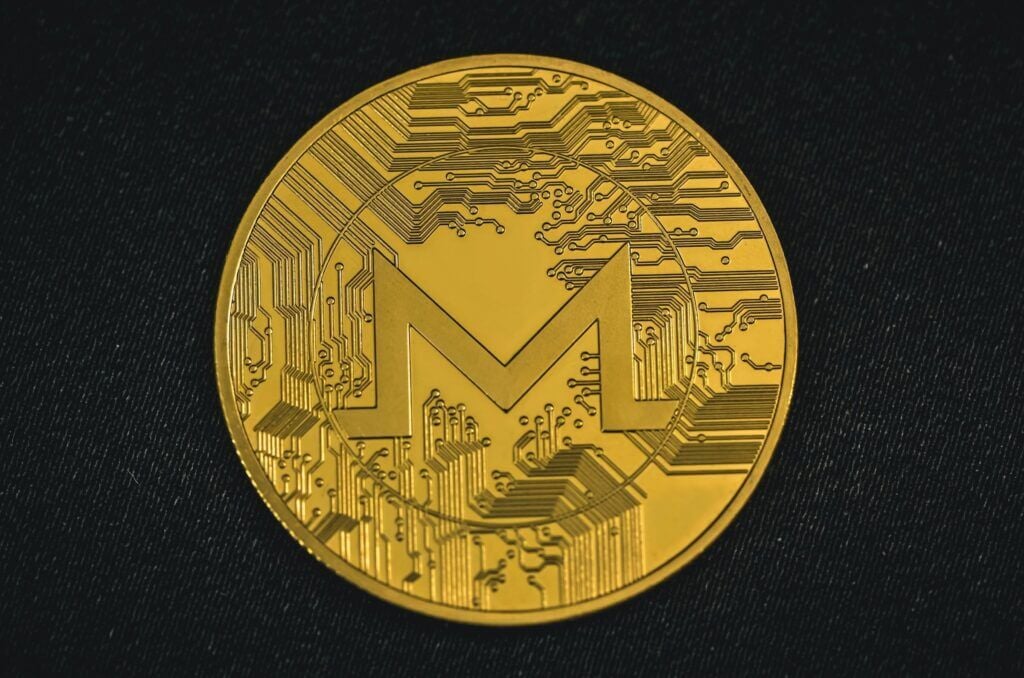Monero’s Battle for Privacy and Relevance

If you care about financial privacy as a crypto investor, you’ve likely examined Monero. Unlike Bitcoin or Ethereum with transparent transactions, Monero uses cryptography to obscure sender, receiver and amount. It delivers genuine transaction privacy. Maintaining that privacy brings constant challenges. The network recently suffered its largest reorganization attack. Monero’s response to these pressures reveals its resilience and long-term viability. The project demonstrates how technology can uphold financial privacy principles despite regulatory and technical obstacles.
Table of Contents
Market Position and Exchange Hurdles

When you check out the XMR to USD exchange prices, you’ll see that Monero is hanging in there pretty well. Currently, it ranks 26th in market capitalization, valued at approximately $5.53 billion, with a circulating supply of roughly 18.45 million coins. It’s still got a solid group of fans who really value what it brings to the table, especially since privacy coins face a lot of tough regulations and limited exchange options.
You won’t find Monero listed on Binance currently, which is the biggest crypto exchange in the world. They’re known for security, compliance and user trust. The projects they list are pretty selective: only projects that meet regulations and have transparent transaction histories. Monero makes privacy features tricky for exchanges. Especially since exchanges are under more regulatory scrutiny these days.
Rachel Conlan, Binance’s CMO, stated that “Every move we make at Binance is designed to scale awareness, build trust, and transform curiosity into lasting confidence. That’s how we grow not just our platform, but the entire crypto ecosystem.” Right now, that vision doesn’t include privacy coins like Monero. They’re focusing more on giving trading info and educational content for assets that meet their safety standards. This pick-and-choose method shows that the exchange is serious about following regulations while still leading in the market.
Understanding the 18-Block Reorganization
The cryptocurrency space recently faced multiple security incidents. These incidents really showed how vulnerable different networks can be. The Shibarium bridge got hit with a $2.4 million flash loan attack, and the developers think it took months of planning to pull off. This clever hack messed with validator keys and proved that some attackers are super determined when it comes to targeting blockchain setups.
On another note, Monero had a pretty crazy moment with an 18-block reorganization. This messed up 117 transactions that were already confirmed, making it the biggest reorg ever for the network. A mining pool called Qubic pulled off a selfish mining attack by secretly working on a longer chain of blocks. They built up a lot of hashrate before kicking off their plan, and when they finally revealed their chain, the network just replaced the old one, wiping out those transactions. The recent events highlighted significant vulnerabilities in proof-of-work systems and illustrated the level of determination some individuals possess when attempting to manipulate blockchain history.
Community and Developer Response to Challenges
The community reacted really well after the security incidents. Instead of freaking out, developers and users jumped into discussions about fixing things. They talked about increasing confirmation times and adding checkpoints. The main goal was to make the network stronger instead of just worrying about short-term price drops. This practical approach characterizes Monero’s development philosophy.
Security researchers are saying we should wait for more confirmations before we can consider transactions as final. Some experts suggested setting up temporary community-run DNS checkpoints to help prevent future reorgs. But that idea raised some eyebrows about centralization, kicking off a good debate on how to balance security with decentralization principles. The technical chats showed that the community is really dedicated to tackling the core issues instead of just slapping on quick fixes.
Development Progress Amidst Challenges
Monero’s developers continue pushing forward with upgrades despite these challenges. The project maintains its commitment to privacy and decentralization through concrete improvements. Two major enhancements are progressing toward implementation, showing the development team’s dedication to long-term solutions.
FCMP++ arrives in late 2025. This upgrade will enhance Monero’s privacy through advanced cryptographic proofs. It might enable compliance verification without compromising transaction privacy. The community has backed this project, showing strong support for better privacy features. This upgrade might also draw in more interest from institutions by offering improved compliance tools.
Seraphis is a new transaction protocol that’s set to replace the current system while making things more scalable and user-friendly. Plus, the Jamtis wallet will have a way cooler interface and functionality. These are all community-funded projects, showing that there’s really active development happening here. The continuous protocol improvements show Monero’s evolution beyond its current capabilities.
Market Reaction and Price Resilience
Investors were caught off guard by an unexpected price shift after a recent reorganization attack. Immediately after the news, Monero (XMR) rose by more than 7%. Such a surprise jump highlights the long-term view of investing that many Monero holders favor over quick profits.
The attack seemed more focused on disrupting network consensus than on Monero privacy features, observers say. This price bounce back really shows their faith in the development team to tackle security concerns. Basically, traders are showing confidence through how they’re buying and selling. That reaction shows that Monero offers something more than technical perfection: it offers ideological commitment to privacy rights as well.
Monero’s Role in the Crypto Market
Privacy grows increasingly valuable in today’s financial markets. Monero provides financial privacy capabilities that few projects can match. Its technology supports the broader movement toward decentralized financial control and individual sovereignty over financial data.
The fact that trading platforms are excluding Monero shows how things are shifting with regulations and what exchanges want to focus on for compliance. As Catherine Chen, Head of VIP & Institutional at Binance, notes: “Bitcoin is maturing into a macro‑sensitive asset: increasingly influenced by monetary policy, central bank actions, and global money supply changes, rather than just crypto‑native events like halving cycles.”
That said, Monero is still trading on platforms and has a solid fanbase behind it. A recent network attack put its security to the test, but it also showed how dedicated both the developers and users are. Monero makes a strong statement about the importance of privacy. That’s a message that still resonates with a lot of investors.
The project faces ongoing challenges from regulators and technical opponents. However, its continued development and market presence suggest persistent demand for financial privacy tools. Monero’s ability to withstand attacks and maintain community support indicates strong fundamentals beneath surface volatility. The privacy coin market remains active despite regulatory pressures, and Monero continues leading this category through technical innovation and ideological consistency.